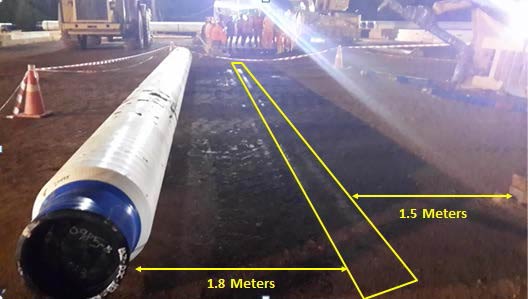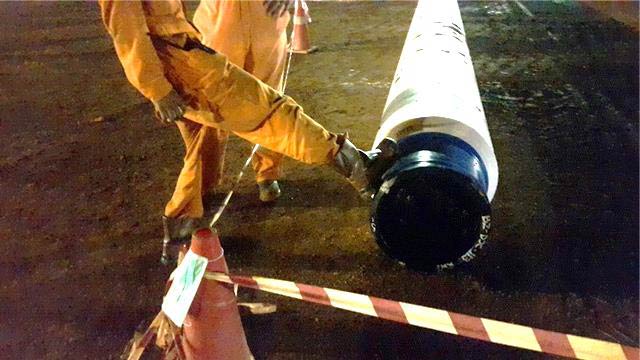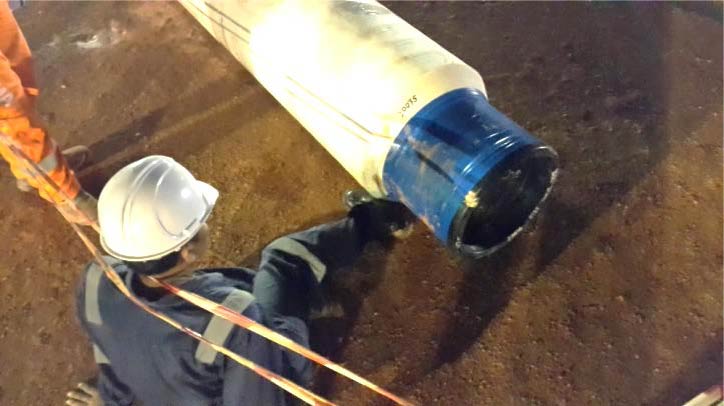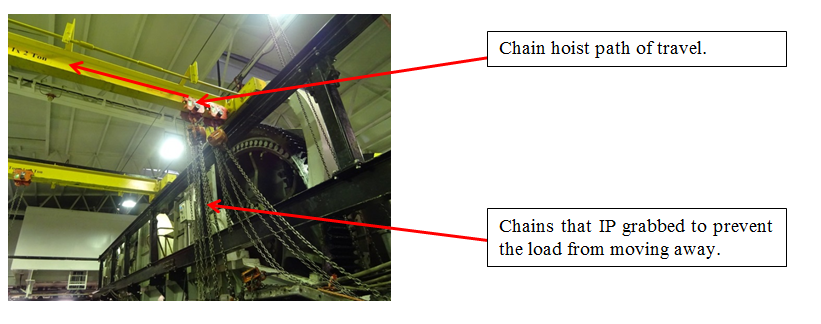Injuries sustained whilst trying to stop moving objects
A member has reported two similar incidents, which happened within two days at two very different locations, in which persons were injured whilst trying to stop moving objects. The first during pipe handling at an onshore yard, the second during maintenance work on a vessel under way. The first incident was classified as a medical treatment case, the second as a first aid case.
Incident 1 – trying to stop a rolling pipe
During ‘routine’ pipe handling at an onshore yard a pipe rolled from the forks of a wheel loader. Although this should not have happened the situation was not of itself dangerous. All personnel were at a safe distance as per procedure. The speed of the rolling pipe was low and there was a lot of empty space around. The pipe first rolled 1.5m from the loader and a further 1.8m to come to a stop. However, the banksman guiding the operation followed after the rolling pipe trying to stop it. When putting his foot against one pipe end he slipped and the pipe end rolled over his foot.




Incident 2 – Trying to stop a moving chain block
This incident happened during ‘routine’ maintenance work on a gearbox. It is usual to conduct such activities while at sea under good weather conditions. For that day however the bridge had announced that bad weather was upcoming. Although the crew members were aware of the vessel motion they did not consider them severe enough to impact the safety of the worksite. However, the vessel started rolling with a double amplitude of 7° which caused a chain block suspending a lifting frame to start uncontrolled travelling along its lifting beam. A mechanic tried to catch the chain of the chain block, in order to regain control of the lifting frame before it could hit equipment or personnel in the vicinity. While doing this, his little finger got stuck in one of the chain links which caused an injury to the top of his little finger.

Our member notes: this safety flash is not about the root causes of loss of control over the objects, which in both cases were very different. It is about the immediate cause, stepping in without thinking to try and stop something. It serves to highlight the reactions of people stepping in and trying to rectify the situation, to bring the object under control again, stopping it. This appears to be a natural behaviour. A couple of years ago a lifting supervisor noticed that a lifting shackle was incorrectly positioned and stepped in to rectify the situation. The shackle toppled over and injured his hand.
Often such reactions are in a hurry or even in a state of panic. People are not aware of potential risks in that particular situation because they do not take (or have) the time to think. There can be a lack of oversight and understanding of the situation.
Job Safety Assessments should consider potential loss of control and define what mitigations should be in place.
Members may wish to refer to the following similar incidents (key words rolling, pipe):
- Serious injury during pipestalk rolling operation
- Fatality in ballast water tank – working at height in a confined space
Members may wish to refer to the following similar incidents (key words chain, block):
Safety Event
Published: 25 November 2014
Download: IMCA SF 18/14
IMCA Safety Flashes
Submit a Report
IMCA Safety Flashes summarise key safety matters and incidents, allowing lessons to be more easily learnt for the benefit of all. The effectiveness of the IMCA Safety Flash system depends on Members sharing information and so avoiding repeat incidents. Please consider adding [email protected] to your internal distribution list for safety alerts or manually submitting information on incidents you consider may be relevant. All information is anonymised or sanitised, as appropriate.
IMCA’s store terms and conditions (https://www.imca-int.com/legal-notices/terms/) apply to all downloads from IMCA’s website, including this document.
IMCA makes every effort to ensure the accuracy and reliability of the data contained in the documents it publishes, but IMCA shall not be liable for any guidance and/or recommendation and/or statement herein contained. The information contained in this document does not fulfil or replace any individual’s or Member's legal, regulatory or other duties or obligations in respect of their operations. Individuals and Members remain solely responsible for the safe, lawful and proper conduct of their operations.
